Welcome back to measure (misura) month. We’re spending the entire month looking at the basics of this measure, your attack & defense options, and some sample play/actions from each measure.
So far, we’ve looked at being Out of Measure and the quasi-modern development of Misura Larghissima, and Misura Larga. Last night, we finished off with Misura Stretta.
Side note: There is one more measure after this, Misura Strettisima but it’s a measure less on sword actions and more on shanking with a dagger and wrestling, so we won’t be going over it here (this time anyways).
The Basics of Stretta
We define Misura Stretta (Narrow Measure) as being able to strike our opponent’s head or torso with a leaning-lunge (a lunge without a step).
At this measure, there is a lot of blade penetration making blade actions like cavaziones very big and changing blade relations, such as parrying or “counter-finding” a blade difficult because of a leverage disadvantage.
This measure is all about taking the initiative. Because we’re so close, even if we have control over our opponent’s weapon, we want to be making quick & decisive action from this measure so they can’t sneak a quick shot around our guard or try to step in further to grapple/wrestle or shank with a dagger.
Stretta & the True Fight

The True Fight is the aspect of fencing where you’re seeking control of your opponent’s weapon. You move forward if you have control and move back & seek control if you’ve lost control. There’s also no deceit (no feints) in the True Fight.
(I created a True Fight text-based game.
You can play Lvl 1 of the True Fight here.)
Our options in stretta are fairly simple as they all end with us striking our opponent, regardless of what they do. What changes is how we strike them.
If our opponent…
- Retreats
- Strike them with a step-lunge (if they perform a simple retreat)
- Strike them with a passing-lunge (if they’re making a large retreat)
- Doesn’t move
- Strike them with a leaning-lunge
- Moves forward
- Strike them with a reverse lunge
Blade Actions & Responses from Stretta
Our options here are pretty simple. As long as we have a good finding (our forte dominating their debole), we should be able to resist any lateral pressure our opponent performs. So if they try to parry or just push your blade out of the way sideways, you can resist their force and drive their point into your hilt by shifting into your Forward Guard.
If your opponent attempts to perform a cavazione, you can counter by performing a volte stabile (stable turn of the hand) to cover/catch their blade on the opposite line.
Striking From Stretta
So we define stretta as being able to strike our opponent’s body with a leaning-lunge. This means that both our front and back foot remain firmly in place and we just shift our body weight forward onto the lead leg. This means if we have control over our opponent’s weapon & the centerline as we enter into stretta, we can quickly strike them in tempo with a leaning-lunge.
The leaning-lunge is demonstrated in the following video, albeit very very slowly.
Often what happens with the leaning-lunge is that our knee will go beyond our toes. This is especially true if your defensive posture is a narrow or moderate width. It’s perfectly fine for your knee to go further than your toes if…
- You don’t feel any sharp or uncomfortable knee pain when you do so
- You remain balanced and not about to fall over
As long as those two prerequisites are there, it’s fine for the knees to go past the toes. If you don’t meet those requirements, you have three options:
- Stop your leaning-lunge early so your knee is over your foot and not beyond the toes. You’ll lose a few inches of reach but have a longer, healthier fencing career.
- Take a wider stance so when you perform the leaning-lunge you end with your knee over your foot and not beyond.
- Lastly, you can perform a small step-lunge instead of the leaning-lunge. The key here is that the step should be very tiny.
If our opponent is moving away from us, we can strike them with a step-lunge (since they’re moving into larga). If they’re really trying to run away from us from stretta by using passing steps, we can strike them with a passing-lunge as they may be moving into larghissima.
If our opponent is moving toward us (either shifting into a Forward Guard, performing their own leaning lunge, or advancing to grapple), we can strike with a reverse lunge and then quickly retreat out of measure while covering the opponent’s weapon.
Defensive Actions from Stretta
The difficulty of stretta also lies in how one defends themselves. If we’re in such a narrow measure in which no matter what we do our opponent can strike us, how can we defend ourselves?
There are three primary ways:
- Yielding Parries
- Yielding/False Edge Attacks & Voids
- Off-hand Parries
Yielding parries or hanging parries work great for when you’re in too close that parrying with the sword normally won’t cut it. Because we’re in so close, if our opponent has us found, we’re going to have a very difficult time changing the blade relation with a regular parry.
Instead, we can yield to the pressure of our opponent’s blade, drop the tip of our sword to the ground while raising the hilt and forte above our heads. This gets the strong of our blade between our opponent’s weapon and our bodies.
Performing this with a retreating step or passing retreat will help us break measure. We can then perform a strammazone (circular wrist cut) to clear or cover our opponent’s weapon.
Two ways of making this parry more effective is hip hinging forward into the Forward Guard and/or performing a mini-squat in stance.
This blade action is shown in the class video at about the 23:35 mark.
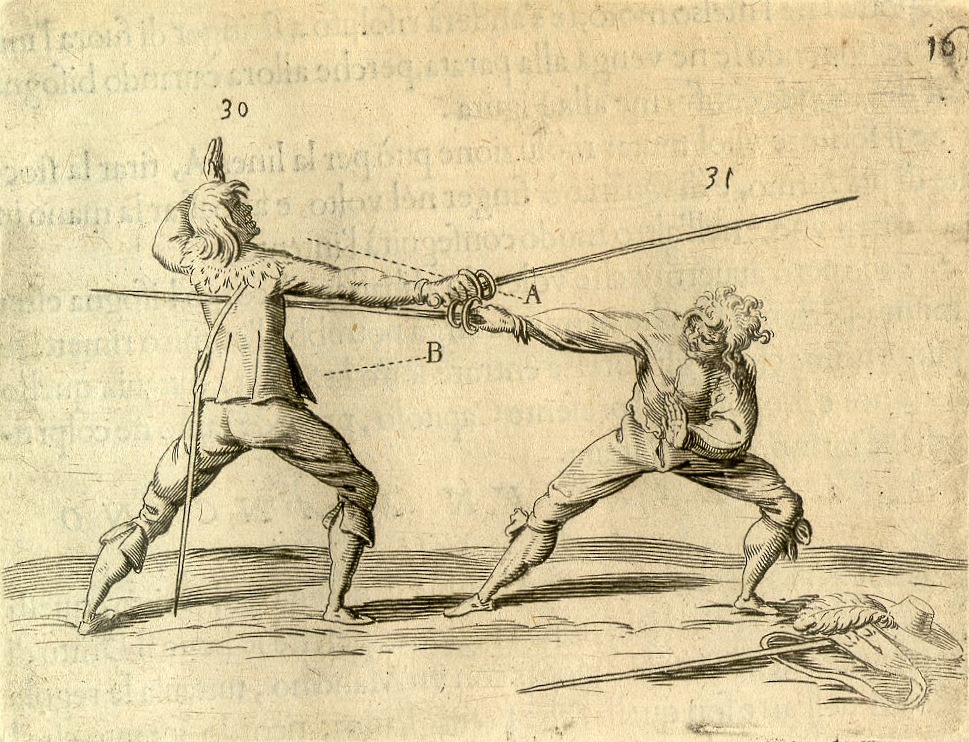
Yielding/false edge attacks are when we turn our true edge (side of the blade inline with our knuckles) away from the opponent so the false edge (backside of the blade) faces the opponent’s weapon. This gives us a very strong crossing and can help shoot around the opponent’s guard.
Doing this alone is dangerous since we don’t have control over our opponent’s weapon, so you’ll want to perform a void of some sort to get the body off line. From the inside line, a low-line void like the beginning of a pasatta sotto is your best best; from the outside line, a simple giratta should work (though you may need a mezza cavazione in the process).
And yes, this is in the defensive actions because sometimes the best defense is a good offense.
Hand parries can also help you get out of this tricky situation. Because we’re in such close measure, our opponent’s point will be pretty close to us, meaning we don’t need to reach our far to get our hands in contact with their blade.

Using the off-hand to close out the line while we free our blade can buy us time to break measure or even turn the tables and strike the opponent from close-in.
Class Video
DONATIONS: Classes are 100% free, however, if you find these sessions useful, please consider a small donation so I can continue to produce rapier & other historical martial arts content. Donate at https://www.paypal.me/thetavernknight



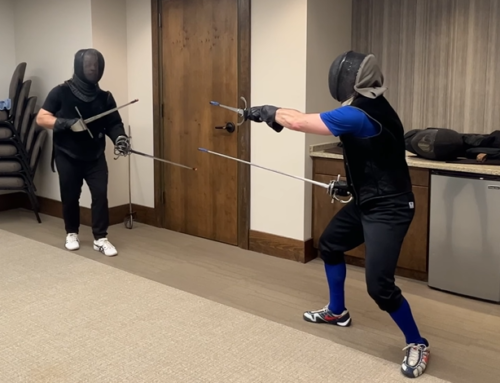
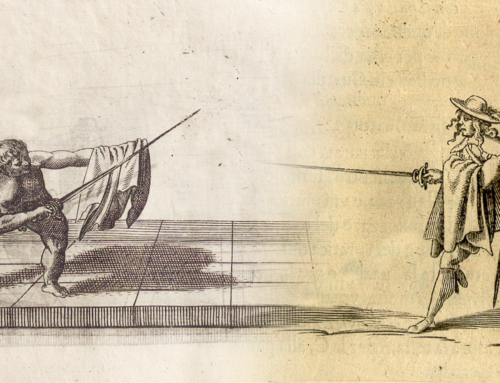

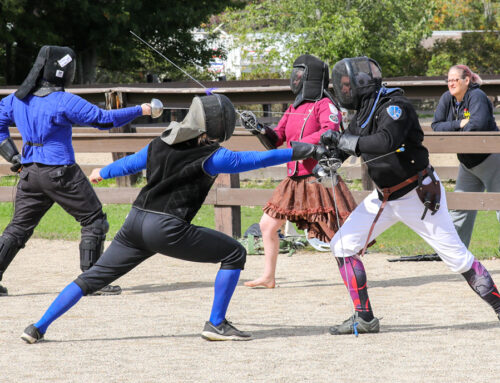
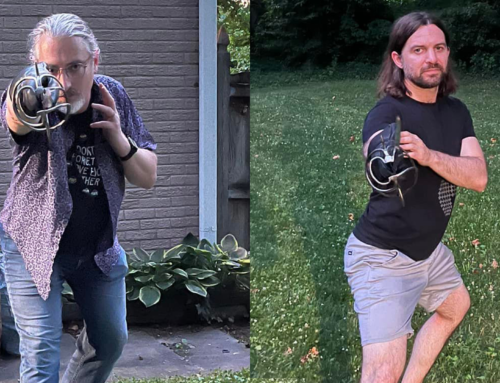
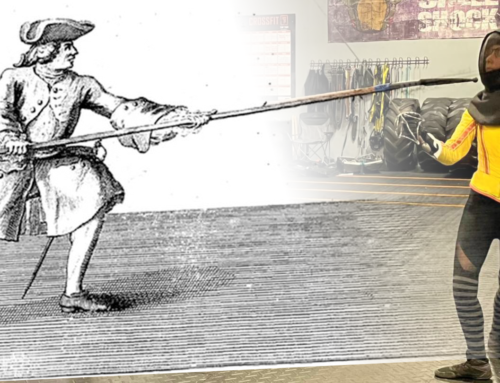
Leave A Comment